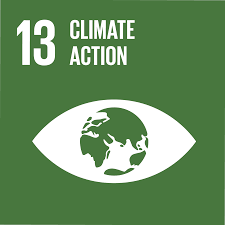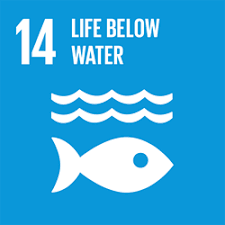Say Goodbye to Coral Reefs
- Joshua Bruns

- Sep 16, 2020
- 3 min read
This article is focused on the follow UN Sustainable Development Goals:
On July 25th, the Japanese oil tanker MV Waikato rammed into a reef on Mauritius’ southern coastline. The following weeks provided a glimpse of the devastation caused when tons of oil polluted an otherwise pristine environment. An oil slick stretching over 11 kilometres, blackened beaches, and dead marine life were just some of the visible effects of the spill. Beneath the waves, the disaster will have even more severe impacts for Mauritius’ environmental diversity. A mass coral bleaching event, and the destruction of seagrass environments are all expected fallouts of this ecological disaster (Goldstein, Joelle). These adverse impacts of the spill will last long after images of oil and dead dolphins are forgotten by the media. The Mauritius oil spill provides a discrete example of the environmental pressures facing our oceans. However, it is misleading to believe that a massive environmental crisis is limited to the coastline of a single tropical island.
Coral reefs are already facing overwhelming challenges without the impact of water pollutants. This March, the Great Barrier Reef, the world's most extensive coral ecosystem faced the most catastrophic bleaching event in its history. A 1,500 kilometre stretch of the reef was impacted by a single bleaching event (Gibbens, Sarah). Coral bleaching occurs when corals expel the algae's living within their tissue. This only happens when corals find themselves in strenuous environmental conditions and lead to coral discolouration and eventual mortality. The Great Barrier reef is by no means the only coral reef at risk of dying, around 75% of the world's coral reefs are at risk of facing bleaching events (Hsin-yun, Wu).

The potential loss of this coral will have devastating impacts on humanity and biodiversity. Nearly 500 million people depend on coral reefs for food and income, and reefs provide an economic output of 375 billion dollars. 25% of marine life depends on reefs, and over 4,000 species of fish are endemic to coral reefs (Cho, Renee). Hence the global value of coral reefs cannot be understated, with a healthy ocean dependent on healthy corals.
Climate change is by far the greatest threat facing coral reefs and is the leading cause of coral bleaching. Corals are extremely sensitive to environmental change and will take action to protect themselves under stressful conditions. One such condition is water temperature; corals ideally function between 23 and 29 degrees. Any hotter, then corals expunge their algae through bleaching. Algae provide photosynthesis for the coral, and if temperature conditions remain unfavourable for algae recolonization, then corals will starve.
As a result of climate change, ocean temperatures are rising and becoming more inhospitable. The summer before the Great Barrier Reef bleaching event, was the hottest in Australian history. Oceans absorb 93% of atmospheric warming caused by climate change, this has led to an average ocean temperature increase of 0.12 degrees per decade. If we continue with current emission patterns, then 90% of coral reefs will be irreversibly damaged by 2030 (Cho, Renee). At the current rate of ocean warming, by 2050 coral reefs will be largely destroyed.

What can we do to save one of the world's most important environments? For starters, it is important to avoid adding extra stress to this delicate ecosystem. Things such as eating sustainably-caught fish, and doing your part to ensure plastic pollutants don’t end up in the ocean go a long way in protecting vulnerable ocean ecosystems. Additionally, wearing sunscreens without harmful chemicals, and not touching corals, ensure the health of reef ecosystems.
There are many initiatives working on the preservation of coral reefs, such as genetically modifying corals to become more heat resistant, and the creation of protected areas around coral reefs (Gibbens, Sarah). However, despite the initiatives taken to protect corals from bleaching, the long term health of coral reefs depends on how well we can tackle climate change. We must keep global warming below 2 degrees to ensure the long term survival of reefs, and with every passing moment, that goal seeps farther and farther out of reach.
Bibliography
Cho, Renee. “Losing Our Coral Reefs.” State of the Planet, Columbia University, 9 Dec. 2019, blogs.ei.columbia.edu/2011/06/13/losing-our-coral-reefs/.
Gibbens, Sarah. “Scientists Are Trying to Save Coral Reefs. Here's What's Working.” The World's Coral Reefs Are Dying-Here's How Scientists Plan to Save Them, National Geographic Society, 8 June 2020, www.nationalgeographic.com/science/2020/06/scientists-work-to-save-coral-reefs-climate-change-marine-parks/.
Goldstein, Joelle. “Damage From Oil Spill in Mauritius Will Impact Wildlife and Coral Reefs 'For Years,' Experts Say.” PEOPLE.com, People, 14 Aug. 2020, people.com/human-interest/oil-spill-mauritius-caused-by-ship-damage-wildlife-coral-reefs/.
Hsin-yun, Wu. “Coral Bleaching in Taiwan Waters Worst in 22 Years: Greenpeace.” Focus Taiwan, Focus Taiwan - CNA English News, 10 Sept. 2020, focustaiwan.tw/society/202009100021.
“What Can I Do to Protect Coral Reefs?” NOAA's National Ocean Service, 10 Aug. 2009, oceanservice.noaa.gov/facts/thingsyoucando.html.






Comments